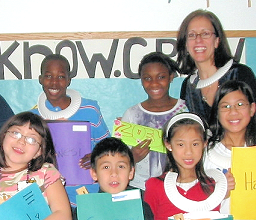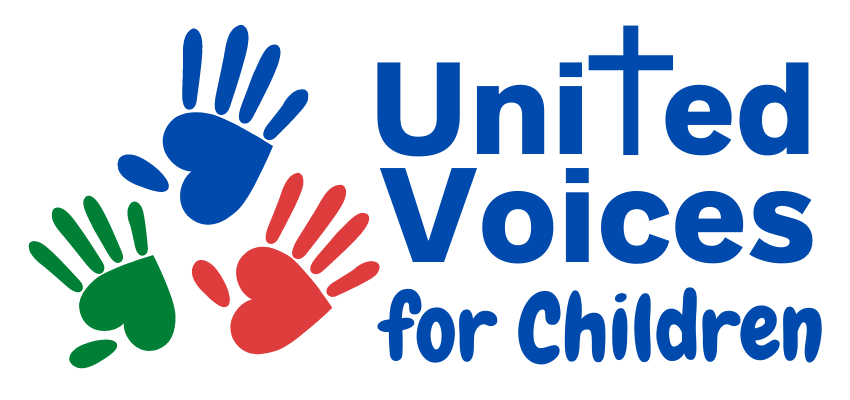Register here for Skin in the Game: Equipping Congregations to Address Racism on August 19th
Whether we want to admit it or not, race matters, especially in America. Whether we want to admit it or not, systematic racism affects children of color, in particular, black and brown children, emotionally, spiritually, physically and often socio-economically. Particularly harmful is the form of colorblind racism which denies, dishonors and devalues students of color culture and God-given physical attributes. To be colorblind – to not see race, is to refuse to see the beauty of God’s creation in students of color and to assimilate them into our own ideas of normalcy. It is also to be unaware and/or unwilling to contend with the reaction that the wider society has towards children of color that is often detrimental, not only to their physical, mental and spiritual well-being; but also affects their ability to thrive educationally and socio-economically.
 Several recent studies highlight the effects of racism on children of color, especially poor black and brown children. Studies show that for many children of color, especially those who are from low income homes, racism affects their physical, emotional and mental well-being even while they are still in their mothers wombs.[1] Once birthed, racism still continues to take its toll on children of color. A May 2017 devastating study entitled The Detrimental Influence of Racial Discrimination in the United States cited that accounting for socio-economic differences, children who were discriminated against had twice the rate of anxiety and depression as their white counterparts; and four times as much to have ADHD.[2]
Several recent studies highlight the effects of racism on children of color, especially poor black and brown children. Studies show that for many children of color, especially those who are from low income homes, racism affects their physical, emotional and mental well-being even while they are still in their mothers wombs.[1] Once birthed, racism still continues to take its toll on children of color. A May 2017 devastating study entitled The Detrimental Influence of Racial Discrimination in the United States cited that accounting for socio-economic differences, children who were discriminated against had twice the rate of anxiety and depression as their white counterparts; and four times as much to have ADHD.[2]
In addition to study that provide ample evidence of the devastating effects of racism on children of color in terms of their physical, emotional and mental well-being, others cite that young black and brown children are often perceived to be much older than their white counterparts. Consequently, young black males are perceived to be more violent and young black females less innocent which often results in not only their dehumanization by law enforcement and school enforcement, but also harsher treatment and punishment.[3] In fact, a July 2016 U.S. Department of Education study found Black students are disproportionately suspended from class as early as preschool, citing that preschool Black boys are suspended 3.6 times more than their white counterparts.[4] These disproportionate suspension and expulsion rates of students of color has led some to refer to its effects as the “school to prison” pipeline.[5]
Lest we think that these statistics are simply “behavioral” issues in that black and brown children need to learn how to “behave respectfully” a 2016 study by Vanderbilt University School of Education Professors Jason Grissom and Christopher Redding found that regardless of their socio-economic status, students of color, in particular Black students, were least likely to be recommended for gifted programs, even when high grades and test scores would indicate otherwise, especially when their teacher was white.[6]
 As heartbreaking as these studies are, my interest in helping those who minister to children understand the devastating effects of racial discrimination practiced by those outside and within the Christian community had to do with my commitments as a Christian; as a United Methodist who holds the tenets of John and Charles Wesley dear; a pastor and a scholar.
As heartbreaking as these studies are, my interest in helping those who minister to children understand the devastating effects of racial discrimination practiced by those outside and within the Christian community had to do with my commitments as a Christian; as a United Methodist who holds the tenets of John and Charles Wesley dear; a pastor and a scholar.
First and foremost, as a Christian, I formed by Scripture that clearly demonstrates that the fruit of our love of God is demonstrated by acts of charity and justice – not only attending to persons immediate needs for food, clothing, shelter and community; but also contending with the powers and principalities that created the unjust situations in which they find themselves. Second, as I have grown in my understanding of the founders of the Methodist movement, namely John and Charles Wesley, I am convinced and convicted that what made Methodism the religiously and socially reforming force of its day was due to the insistence of John Wesley that Methodists understand the social issues of the day, especially as they pertained to the poor and people of color through developing relationships; and work to dismantle systems that oppressed them.
As a pastor, I understand that my responsibility is to not only equip the laity with regard to public and private worship, what Wesley called the “works of piety” that helped us grow in love of God. As a Unite Methodist pastor, I am also called equip the laity with regard to those acts of charity and advocacy that lead to the dismantling of oppressive systems. In fact, it is this aspect of being willing to engage in advocacy and in joining with the oppressed for their liberation that has led A.M.E. historian and Vanderbilt University professor Dennis Dickerson to maintain that Methodist Christians can be found at the heart of most American liberation movements.
As a scholar, I know that to not enter into the “existential” existence of children of color by maintaining colorblind racism that seeks to assimilate them into American culture and society is to fundamentally deny the incarnation, miss the ability of evangelism to heal us of our own “isms,” question God’s sovereignty regarding creation, and to deny the Spirit’s ability to maintain diversity-in-unity which is fundamental to our understanding of the church. First and foremost, Phil. 2: 5 – 8, reminds us that Jesus exchanged the glory of heaven and took on human flesh, specifically Jewish, male and oppressed human flesh. Jesus enters into our very existence so we can better relate to him and be lifted up. In the same way, this passage argues that we should have the same mindset towards others, especially those who we deem lower than ourselves. Second, to not engage the culture of those different from us and recognize the systemic impact of cultural oppression on them is to deny the healing nature of evangelism to deliver us from our “isms.” This is easily demonstrated in the encounter between Peter and Cornelius in Acts 10. While many Bibles describe this encounter as the conversion of Cornelius, I would argue that it is the apostle Peter and the church that is in need of conversion. Peter and the Jewish Christian Church have an underlying race issue that God must confront if the gospel is to be spread beyond its Jewish boundaries with any effectiveness. Third, to say that we “simply don’t see color,” is to lie and to deny the beauty of God’s creation and God’s sovereignty in creating humans as God sees fit. God creates humans, all humans, in God’s image. Period. Finally, to assimilate or attempt to assimilate persons into a dominant culture strikes at the very heart of God’s design for the church. In 1 Corinthians 11 – 12, the apostle Paul admonishes the Corinthian church that to fracture the church based on cultural expectations is to eat at the table of Holy Communion unworthily. He especially reminds them that diversity, especially diversity-in-unity is God’s idea and God’s gift hinted at Pentecost.
Finally, I am encouraged as a former seminary professor who has seen first-hand the impact on ministry when predominantly white students work hard to understand the devastating effects of racism on communities of color and the larger society. Using a wide variety of tools from videos to student participation exercises, I have seen white students, especially those from more liberal backgrounds and/or those who truly believed that our society was post-racial, discover the hidden reality and destruction of colorblind racism on all aspects of society, and their own, often unconscious participation in forms of systemic racism. Once they face the demonic aspects of it, many of these students went on to develop creative ministry projects within their own, often predominantly white congregations, which brought about holistic and healthy ministry for the congregation and the communities in which they ministered with. In fact, taking time to understand racism and its effects in the 21st century positioned students to better affirm the culture and contribution of communities of color.
Rather than understanding ministry as something we do “to persons,” they were better able to see ministry as with persons who had been gifted by God to be part of the solution. The end result was to disengage in relationship with communities of color as patron-clients; but rather as brothers and sisters, together the family of God. Not so surprisingly, scholars have discovered that when children of color are affirmed as being of equal worth and are affirmed of the value of their cultural experiences, they not only survive but thrive.[7]
[1] Jyesha Wren Serbin and Elizabeth Donnelly, “The Impact of Racism and Midwifery’s Lack of Racial Diversity: A Literature Review;” Journal of Midwifery & Women’s Health; Nov/Dec2016, Vol. 61 Issue 6, 694.
[2] American Association of Pediatrics, “Study Finds Exposure to Racism Harms Children’s Health,” AAP News; May 4, 2017; http://www.aappublications.org/news/2017/05/04/PASRacism050417, accessed July 5, 2017.
[3] Phillip Attiba Goff, et al., “The Essence of Innocence: Consequences of Dehumanizing Black Children,” Journal of Personality & Social Psychology; Apr2014, Vol. 106 Issue 4, http://www.apa.org/pubs/journals/releases/psp-a0035663.pdf, accessed July 5, 2017.
[4] Casey Quinlan, “New Data Shows The School-To-Prison Pipeline Starts As Early As Preschool;” Think Progress, https://thinkprogress.org/new-data-shows-the-school-to-prison-pipeline-starts-as-early-as-preschool-80fc1c3e85b, accessed July 5, 2017.
[5] Matthew Lynch, “ Black Boys in Crisis: The School To Prison Pipeline;” Education Week Blogspot, http://blogs.edweek.org/edweek/education_futures/2016/08/black_boys_in_crisis_the_school-to-prison_pipeline.html, accessed July 5, 2017.
[6] Alia Wong, “Why Are There So Few Black Children in Gifted Programs?” The Atlantic, January 19, 2016, https://www.theatlantic.com/education/archive/2016/01/why-are-there-so-few-black-children-in-gifted-and-talented-programs/424707/ accessed July 5, 2016. Also see, Jason A. Grissom and Christopher Redding, Discretion and Disproportionality: Explaining the Underrepresentation of High-Achieving Students of Color in Gifted Programs, January 18, 2016, http://journals.sagepub.com/doi/pdf/10.1177/2332858415622175, accessed July 5, 2017.
[7] Adriana Umaña-Taylor, “A Post-Racial Society in Which Ethnic-Racial Discrimination Still Exists and Has Significant Consequences for Youths’ Adjustment,“ Current Directions in Psychological Science; Apr2016, Vol. 25 Issue 2, 111.
The Rev. Felicia Howell LaBoy, MDiv., MBA, Ph.D. is often described as someone who moves “from the seminary to the street, from the pulpit to the pavement.” An Elder in full connection in the Northern Illinois Conference of The United Methodist Church, she has 14 years of urban and multicultural pastoral ministry. She currently serves St. John’s UMC in Oak Park.
